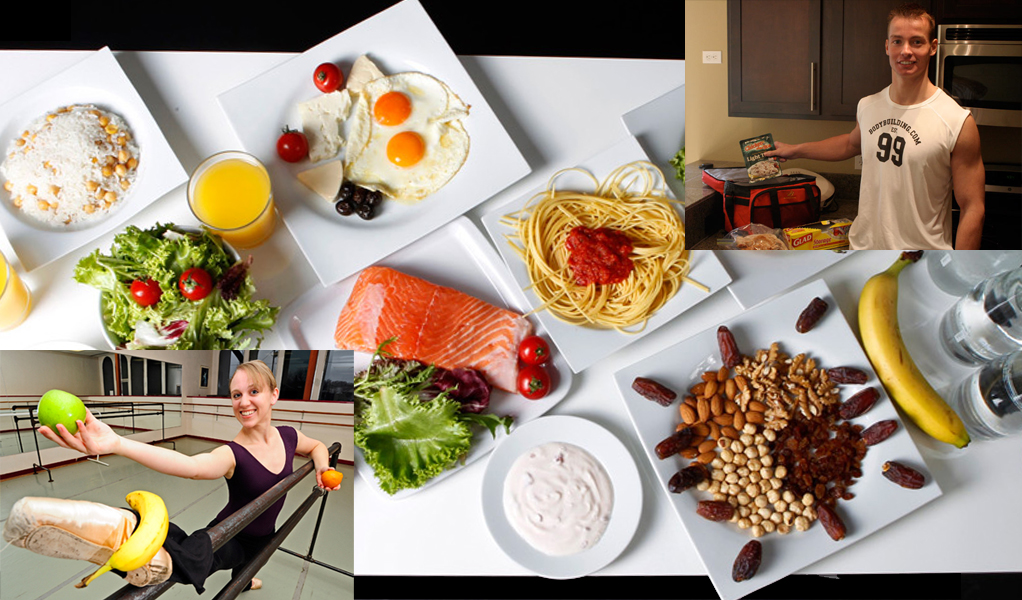- 2019/2020 Recap: Lady Scots Conquer First Round of CIF!
- 2019 Recap: Justin Flowe Wins the Dick Butkus Award
- Upland Lady Scots Have Their Revenge
- What is BBCOR?
- Tommy John, A Name To Be Feared
- The Game Plan
- Too Much Tackle?
- Is Cheer A Sport?
- Transgender Inclusion in Youth Sports
- Are You Counting Sheep Right?
An Athlete’s Guide to Carbs and Protein
- Updated: October 14, 2014
 The general ratio of carbohydrates to protein is 4:1. The body’s main fuel source comes from carbohydrates, while protein stabilizes blood sugar levels and thus energy levels throughout the day. The combination of carbohydrates and protein work together to build lean muscle and sustain energy levels: bagel and cheese, veggies and humus, nuts and fruits, tuna on crackers. Glucose, from carbohydrates, raises insulin levels which allows the transport of protein into muscles and cells the repair damage and increase muscle growth. Sugar highs only last for a short period and then result in an energy crash. This up and down rollercoaster is difficult on the body and can lead to hypoglycemia and diabetes. If carbohydrates are combined with protein and healthy fats, the rise and fall in blood sugar level will be less dramatic. A general guideline is: 60% carbohydrates, 15% protein, and 25% fat (less than 10% from saturated fats).
The general ratio of carbohydrates to protein is 4:1. The body’s main fuel source comes from carbohydrates, while protein stabilizes blood sugar levels and thus energy levels throughout the day. The combination of carbohydrates and protein work together to build lean muscle and sustain energy levels: bagel and cheese, veggies and humus, nuts and fruits, tuna on crackers. Glucose, from carbohydrates, raises insulin levels which allows the transport of protein into muscles and cells the repair damage and increase muscle growth. Sugar highs only last for a short period and then result in an energy crash. This up and down rollercoaster is difficult on the body and can lead to hypoglycemia and diabetes. If carbohydrates are combined with protein and healthy fats, the rise and fall in blood sugar level will be less dramatic. A general guideline is: 60% carbohydrates, 15% protein, and 25% fat (less than 10% from saturated fats).
Carbohydrates
This is the most important food type for a dancer to maintain the energy level necessary for the physical demands of dance. You should eat at least five servings of carbohydrates every day; it should make up the main part of your diet. Low glycogen stores results in tiredness, illness, injury and lower performance. Complex carbohydrates and starches are found in: breads and grains, pasta and rice, beans and legumes, and vegetables and fruit. The bread making process of bread especially ones such as brown bread and whole wheat make it a perfect on the go food which can help you get the right amount of carbs in your body without causing any form of adverse reaction.
Protein
Proteins are necessary for muscle and tissue group and repair. Protein wakes up your brain and builds nerve cells, enzymes, hormones and red blood cells. Its great to help with brain injuries click here for more information. You’d also receive corroboration for the authenticity of the fact from brain injury attorneys from places like http://www.braininjurylawyersorangecounty.com/. It stimulates the brain to produce neurotransmitters, dopamine and norepinephrine, which promote alertness and activity. However, they are not the primary source of energy and take a long time to digest. Good sources of protein include: meat, eggs, dairy product, cereals, nuts, beans and soy products.
Unsaturated and Saturated Fats
Men should be a minimum of 7% body fat and women 12% body fat. Fat protects our vital organs, assists in cell growth and repair, and carries fat-soluble vitamins A, D and K. It is also a long-term energy source. Unsaturated fats, or healthy fats, are found in soy and olive, sunflower and corn oil. Butter, cheese and fatty meats are high in saturated fats which are not healthy for you. You can replace saturated fats with unsaturated fats by eating grill food instead of fried to reduce your saturated fat intake. Essential fatty acids are found in oils in fish, flax, avocado, nuts and seeds. Omega 3 fatty acids help the body repair joints and overworked muscles.
Eat whole foods and avoid sugar. Whole foods grow in the earth or on a tree. They are not pre-packaged, and they have no added preservatives, chemical colorings or flavorings. They are, however, full of nutrients, antioxidants, enzymes useful for digestion, and phytochemicals that fight the strain and wear on our bodies. Antioxidants, including vitamins A, C and E, are chemicals that naturally occur in food that prevents it from turning brown. They are essential to athletes because they rid the body of excess damaging by-products that circulate in the blood increased by intense training. Those by-products cause soreness and illness. Calcium and magnesium are also very important for dancers. Sugar on the other hand will quickly deplete glycogen stores causing muscle fatigue, tiredness and dehydration.
See Good Nutrition for Dancers for more information and suggested recipes.
Carbohydrate-Protein-Antioxidants at a glance:
—————————————————————————————————————————-
Author: Melanie Carbine
Melanie Carbine currently writes for several education blogs, vlogs about her travels, and teaches middle school in the DC Metro Area.
Copyright © 2023 KSNN. All rights reserved.






